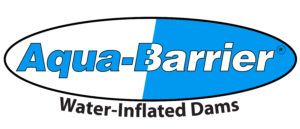Many times, a construction project disrupts the environment and the area they are working in. In order to help preserves the land and local habitats of birds, fish, and other important species. After the construction work is complete, the process of site restoration begins. [bctt tweet=”Whether you are repairing a bridge, replacing pipeline, or constructing a new building, site restoration is an important piece of the job. Check out this site restoration checklist for your next project.” via=”no”]
Site Restoration Checklist
After construction, the goal is to restore the worksite to its pre-construction condition. To do this, it’s a good idea to create a site restoration plan. This site restoration checklist can help you better prepare for your next construction project and the site restoration afterward:
- Runoff Reduction
- Water Quality Protection
- Site Topography
- Water Table
1) Runoff Reduction
It is important to reduce runoff as much as possible. Runoff is created when rain falls and if the ground is not restored and runoff reduced after a construction project, it can lead to issues with erosion and habitat loss.
2) Water Quality Protection
One of the most important parts of the restoration process is being in compliance with water quality and protection. It is imperative that chemicals and other hazardous materials are not dumped on land or in water and that they are properly disposed of to prevent harm to the water in the area.
3) Site Topography
Restoring the site topography is another top concern when it comes to site restoration. It is important to document the existing topography so it can properly be replaced after the construction process.
ProTip: Restoring the site topography after construction is important. Be sure to document topographic variation prior to project work, including shape, slope, elevation, aspect and contour.
4) Water Table
When you pull water out of a site for construction purposes, the water table risks contamination, which can seep into the groundwater. It is important to return the water table back to its original depth. By using an Aqua-Barrier® Cofferdam, you can simply drain the site water back to where it belongs and prevent contamination of the water table.
Essential Site Restoration Checklist
It’s important to have the right tools for your project–they can help reduce damage and cut down on restoration time. For example, when you use sandbags to dewater your site, it raises the risk of damage to the area. If you were to use an inflatable bladder dam to dewater your construction site, you simply drain the water back where you got it from and pack up in a day or two. Because of this, minimal manpower required, cutting down on prep and cleanup time, allowing contractors to finish on time or early.
Contact us to learn more information about site restoration after a construction project.


